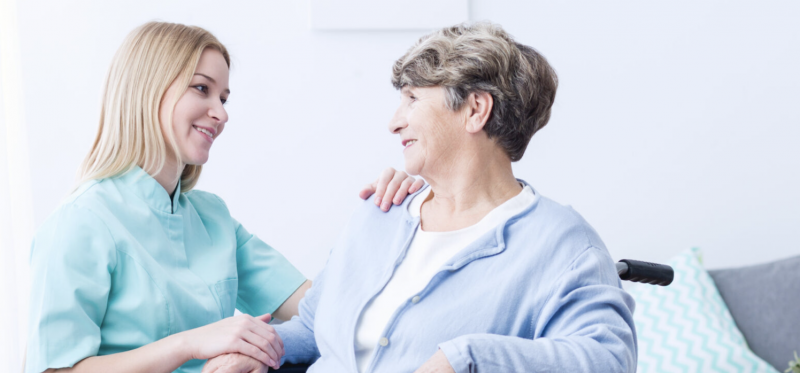There are a number of best practices that should be followed when moving and handling patients, along with specialist equipment that assists with safe handling.
Best equipment for moving and handling patients
The type of equipment needed for moving and handling patients will vary vastly dependant on the individual needs of the patient. Equipment available to carers to make moving and handling easier includes:
Transfer boards
Transfer boards are used to assist in moving patients from one piece of furniture to another. For example, from a bed to a chair. They are often made from plastic or wood and have handles to make them easy to grip. The board is placed against the patient’s back and they are then slid across onto the desired piece of furniture.
Patient lifts
Lifts are used to assist in moving patients who are unable to weight bear or who need support transferring between lying and sitting positions. They come in a range of sizes and types to suit different needs, including ceiling lifts and mobile hoists.
Slings
Slings are used with patient lifts to support the patient during transfers. They are made from a variety of materials, including mesh and fabric, and are available in different sizes and shapes to fit different patients.
Satin slide sheets
Satin slide sheets allow carers to transfer and turn patients with ease. They consist of a base and draw sheet, made of a smooth material which allows for turning whilst minimising friction on pressure points.
Swivel pads and glide cushions
Swivel pads and glide cushions are used to aid in the turning of patients. They are placed under the patient’s hips and knees, which allows them to be turned more easily.
Specialist beds
There is a range of specialist beds available which can assist in moving and handling patients. There are profiling beds, which can be adjusted to different positions, and bariatric beds, which are designed for patients who are overweight.
Choosing the right equipment
When choosing equipment for moving and handling patients, it is important to consider the needs of the individual patient. The type of equipment needed will vary depending on the patient’s strength, weight, mobility and any other health conditions they may have. It is also important to consider the carer’s own strength and abilities, as some equipment can be heavy and difficult to manoeuvre.
Using equipment correctly
When moving and handling patients, carers should always:
- Use appropriate equipment for the individual patient
- Seek assistance when needed
- Avoid sudden or jerky movements
- Use good body mechanics
- Lift from the legs, not the back
Failure to follow these best practices can result in serious injury to both the patient and carer.
Reducing the risk of injury when handling patients
Common injuries
Injuries are common when moving patients, for both the carer and patient. Being aware of the common injuries caused by unsafe handling, means you can make an effort to avoid them.
The most common injuries carers get are back injuries. This highlights the importance of lifting from the legs and not the back.
The most common injuries caused to patients from being handled incorrectly are:
- Damage to fragile skin
- Shoulder and neck injuries
- Increasing breathing difficulties
- Cuts and bruises
How to reduce risk of injury
- Never lift above shoulder height
- Keep your feet stable
- Keep your back straight and bend at the knees
- Have a firm hold
- Lift as smoothly as possible
Training
It is crucial to continue to undertake training on handling patients, as well as how to use any new equipment. This will help to keep you up to date with best practices and ensure you are using the equipment correctly.
